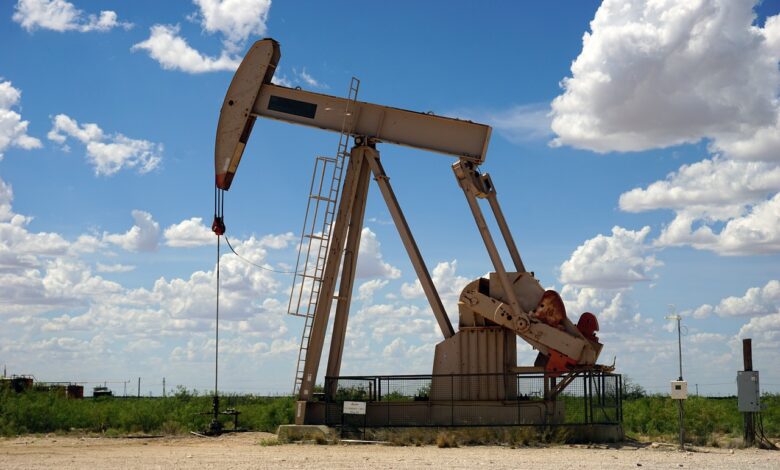Drilling vs returns.The trade-off for U.S. oil producers as a windfall tax looms

(Reuters) – U.S. oil firms earning from sky-high prices are doling out billions to shareholders and creating cash reserves, a strategy irking politicians and voters struggling with record fuel prices while winning over Wall Street.
Soaring fuel costs have lifted inflation to a 40-year record and are predicted to drive up U.S. gasoline by more than a dollar to $6 a gallon by August. That scenario has some policymakers suggesting the industry’s drive for profits is enriching a few at the expense of customers.
The choice between higher rewards for just a single quarter and more expenditure on production has deprived the market of about half a million barrels of new oil daily, based on Reuters’ calculations of possible output if half of existing investor payouts flowed to new oil and gas drilling.
Earnings from big U.S. shale, which accounts for two-thirds of U.S. oil output, might surpass $90 billion this year, up from $37 billion in 2021, according to consultancy BTU Analytics, a FactSet company. Its estimate encompasses only 32 publicly traded oil and gas firms.
Executives are facing proposals in Washington for windfall fees, which may slash energy profits. A group of more than 30 politicians recently sought a Congressional vote on a new oil tax.
U.S. President Joe Biden on Friday attacked oil companies, claiming they are purposely holding off drilling more to push up oil and share prices. [nL1N2XX1VP]
“They’re buying back their own stock, which should be taxed, quite honestly,” Biden remarked.
Executives and investors have maintained that fuel costs are established by the market and retailers, not manufacturers. Materials and manpower limitations have hampered how rapidly they can ramp up output, and spending a lot more on additional drilling would degrade capital efficiency and encourage investors to quit.
Though experts and oil executives do not anticipate a windfall tax to pass here, Britain recently implemented a 25 percent oil profit tax to offset consumer energy expenses, offering encouragement to some U.S. politicians advocating the tax.And resistance to the tax may wane as fuel prices increase and corporate earnings follow.
“If the conservative government in the U.K. can approve a windfall tax, we should be able to pass” a U.S. version, said Representative Ro Khanna, Democrat of California, and a co-sponsor of the tax idea.
The goal is to raise $45 billion a year, with earnings supporting payments to customers.
But a windfall tax would kill the incentive to drill more, said oil executives, and take away some of the earnings that fund new technical breakthroughs that led to the U.S. shale revolution, which put the United States as the world’s top producer. It would also reduce oil businesses’ capacity to raise outside capital.
“This is a poor concept,” said Mike Oestmann, chief executive of shale firm Tall City Exploration. “If you want less of something, or some activity, or some industry, tax it more highly.”
pumping up output, not prices.
Motivating windfall tax backers is the belief that U.S. energy companies are holding off on output to maintain high prices and earnings. Companies returned some $9.51 billion to investors in the first quarter, according to energy consultancy Wood Mackenzie.
If oil companies had spent half of the $9.51 billion on new drilling, it would have supported approximately 660 new shale wells, according to Reuters calculations using energy technology firm Enverus’ average cost of $7.14 million per shale well last year.
According to BTU Analytics, output varies per basin but, on average, a new well can provide approximately 672 bpd of oil. Based on the extra wells and the average new shale-oil output, production may be enhanced by some 450,000 bpd.
Those extra barrels might raise U.S. production this year beyond the pre-pandemic high of 12.23 million bpd in 2019. The government estimates output to climb from 720,000 bpd to 11.92 million bpd in 2022.
Making energy stocks attractive again
Between 2006 and 2019, the top 50 U.S. oil producers spent $170 billion more in capital expenditures (capex) than they generated from operations, using debt and equity to fund the shortfall, says independent oil researcher Paul Sankey.
“Effectively, there were no returns” for shareholders, he said.
Investors last decade avoided energy businesses for their lack of returns and lowered their weighting in the S&P 500, a gauge of shareholder interest, to less than 3 percent in 2020, from more than 16 percent in 2008. S&P energy equities today are 5.1 percent with expanding earnings on rising oil and gas prices.
The change in mindset came when producers changed to a strategy of investing just a third of their cash flow into drilling and other capital expenses, compared with most of their cash flow two years before, according to the latest statistics from Enverus.
Focusing on shareholder returns over new production is not going away with the rise in energy prices. U.S. crude prices are up roughly 60 percent so far this year.
“Not one significant public (shale producer) increased capex in Q1 for higher activity,” claimed Kaes Van’t Hof, finance head at shale firm Diamondback (NASDAQ:FANG) Energy Inc, in a recent twitter post.
That determination to hold the line on production and reward investors via dividends and buybacks “is changing the investment aura,” making energy equities appealing again, said Matthew Stephani, president of Cavanal Hill Investment Management, part of BOK Financial Corp.
The S&P 500 oil and gas sector is up more than 60 percent year-to-date, surpassing the broad-market index average, which is down for the year.
Will investors support a return to increased spending and lower shareholder returns? They will not, say portfolio managers and investors.
“As an investor, I think this is a fair balance. The companies have proved they can’t be trusted,” said Chris Duncan, who analyses shale firms for asset management Brandes Investment Partners.





